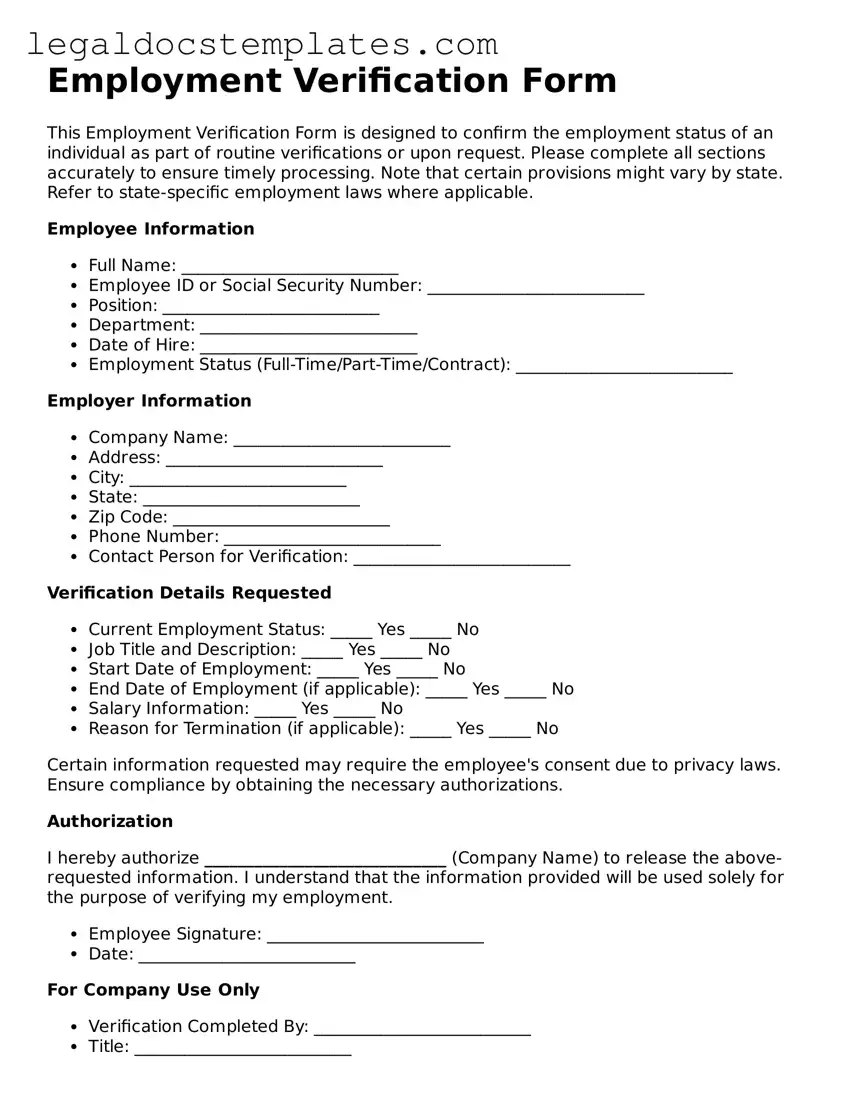Filling out the Employment Verification form is an essential step in many processes, such as obtaining a loan or securing housing. However, it's common for individuals to make mistakes that can cause delays or even jeopardize their applications. One such error is not checking for accuracy in the details provided. This includes misspelled names, incorrect employment dates, or salary figures. Accuracy is crucial as it reflects the reliability of the information, and even small discrepancies can raise questions about the document's authenticity.
Another mistake often made is not completing the form in its entirety. Some sections might seem irrelevant or too intrusive, leading individuals to leave them blank. However, every part of the form serves a purpose, and incomplete information can result in processing delays. It's important to address each section, providing all requested details to ensure the form is processed efficiently.
A common oversight is failing to obtain the necessary signatures, especially when the form requires an employer's verification. Without the employer's signature, the form lacks validity, deterring the process it was intended to facilitate. It's vital to secure these signatures before submission to avoid unnecessary complications.
Many people also neglect to provide supporting documentation, such as pay stubs or tax returns, when required. This supplemental information can be crucial for verifying the employment and income details listed on the form. The absence of these documents can lead to verification delays or doubts regarding the veracity of the provided information.
Submitting outdated information is another frequent error. Employment circumstances can change rapidly, and using outdated forms or providing information that no longer reflects current employment status can mislead the reviewer. It's important to ensure that all information is current and accurately portrays the individual's employment situation.
Ignoring follow-up requests is a mistake that can severely impede the verification process. Sometimes, an entity processing the form may need additional information or clarification. Failing to respond to these requests promptly can halt the verification process, affecting the individual's application negatively.
Lastly, a lack of clarity in handwriting or explanation can also hinder the form's processing. If the form is filled out by hand and the handwriting is illegible, or if the explanations provided are too vague, it can cause confusion and delays. Taking the time to fill out the form clearly and comprehensively can help avoid these issues.
Avoiding these common mistakes can significantly improve the employment verification process, helping individuals to achieve their goals more smoothly and efficiently.
